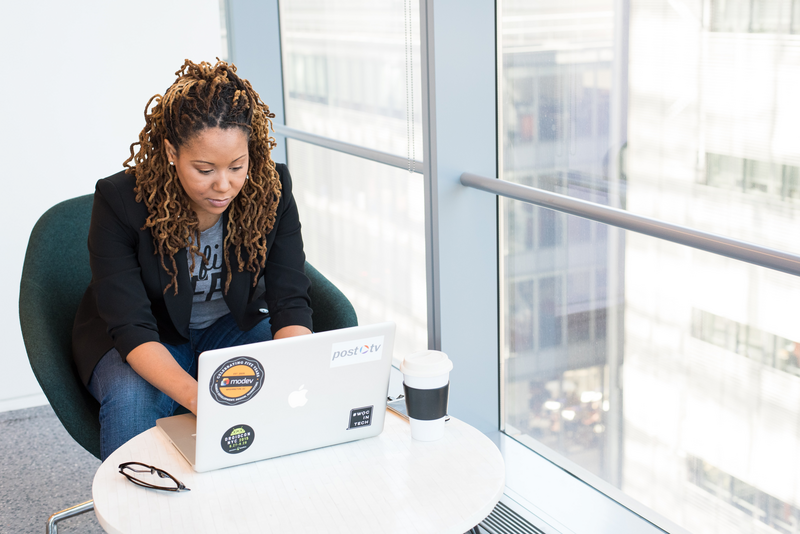ATD Blog
Coaching Virtually: Not Just for These Uncertain Times
Mon May 18 2020

Lately I’ve been invited to attend several webcasts for coaches offering to help us transition from in-person to remote coaching during the COVID-19 crisis. I’d been a fan of virtual coaching for years before this pandemic befell us—and not just virtual coaching that looks a lot like face-to-face coaching (for instance, on a video conferencing platform), but asynchronous virtual coaching as well.
I didn’t start out feeling that way. Many of the fellow coaches in my certification program and I used to think that coaching face-to-face was far preferable to remote coaching. After all, we thought, how could we connect with another individual on a deeper level from afar? How could we clue in to the dynamics that are present when we are physically there with someone when we are not in the same space as them?
Our instructors told us that coaching remotely (in those days, it was primarily by phone) could be even more effective than in-person coaching because when you couldn’t see the coachee, you could hear them better. Over the phone, you might listen more deeply and catch the hesitation in their response or that deep sigh. Additionally, they posited, coachees may feel freer to share some things they wouldn’t feel as comfortable sharing in-person. Studies backed up my instructors’ claims, including one from 2011 by Berry et al. that showed that coaching long-distance is just as effective as face-to-face.
In recent years, when much of my coaching has been conducted remotely both “live” and asynchronously, I’ve noticed a few additional benefits: Synchronous technological tools allow the coach and coachee to connect from wherever they are in the world. Asynchronous opportunities allow coachees to access coaching on their own schedule, in doses that are large or small, depending on what the coachee needs in the moment, and, most importantly, give the coachee an opportunity to think through what they want to say before they submit any response. I’ve found that this has given my coachees chances to reflect more deeply and to more clearly articulate what is happening for them. Additionally, remote coaching can eliminate unconscious facial cues or gestures of your own that you that show whether you like or dislike what your coachee is telling you.
The fundamentals of coaching are the same whether you are doing it in person or using technology. You will still want to embrace basic principles of how people make positive behavior changes; you still want to create a trusting, collaborative relationship; and you still want to agree on how you will work together—when, where, how often, and for how long. And you may wish to consider these additional aspects of remote coaching:
Be Flexible About Which Remote Coaching Technology to Use: Base your decision about whether to coach via email, phone, or video considering what works best given the situation or the content, not based on your own preferences or what’s easiest for you. For example, if I’m coaching someone on how to secure a promotion, I might coach primarily by email and also do a session via Zoom to conduct a mock interview. Email is great for posing questions to ponder or activities to try but doesn’t work for in-the-moment feedback. You also need to be flexible to migrate to a different platform when you or your coachee has a poor Internet connection or are on the road without your familiar technology.
Agree That Neither of You Will Multitask: The distractions technology offers are plentiful. When you are establishing agreements for working together remotely, include that you both will shut off distractions—like incoming texts and emails or multiple open windows on the computer—and focus on the conversation. If watching yourself on camera is a distraction for you, hide that view.
Consider Your Surroundings: Just as you would find a private and quiet spot for in-person coaching, do the same for synchronous remote coaching. Make sure that you can’t be overheard to maintain confidentiality and that there is no background noise. If you do anticipate a possible interruption—from a doorbell, pet, or person—explain that at the start of your session and deal with it quickly and professionally if it does occur. With video coaching, also check the lighting (Is there a shadow across your face?) and audio.
Narrate What Is Happening: If something the coachee has said makes you smile, say so. If you are taking notes and not able to speak for a moment, make sure they know why you are looking down and not making eye contact. Some things that they would be able to see were you together will require explicit explanation when you are apart.
Allow Additional Time to Build Trust: If you haven’t worked together before, you may need to allow for more time to build trust and define the relationship before you will be able to discuss complex or sensitive issues remotely.
Many of us have turned to remote coaching given the current situation. Maybe remote coaching is one of the positive things from this time that we’ll wish to carry forward when things are back to normal.
